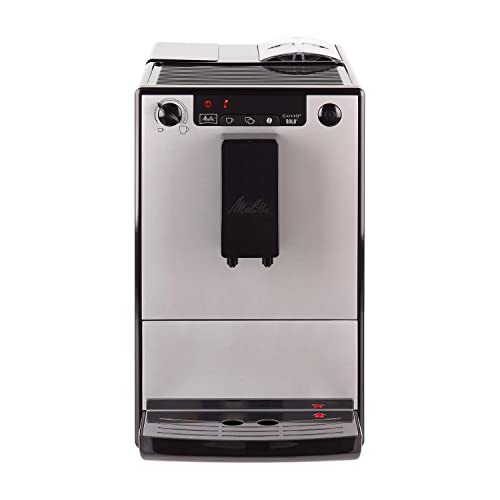 Should You Buy an Espresso Machine?
Should You Buy an Espresso Machine?
 Espresso machines require higher pressure and temperatures than standard coffee makers. They also provide a more concentrated and full-bodied cup of coffee.
Espresso machines require higher pressure and temperatures than standard coffee makers. They also provide a more concentrated and full-bodied cup of coffee.
Dual boilers are the ideal option, as they let you steam milk and make espresso simultaneously. This is a major improvement over most single-boiler espresso machines.
Features
Even novices can now pull a great shot of espresso. The pressure gauge is a crucial feature, since it lets you monitor the pressure of water within the pump while it's running. It assists in preventing channeling, which can cause weak shots. This feature is only available in higher-end models.
Another crucial feature is a pre-infusion feature, which helps to ensure that all of the grounds are covered with water, which is important for extraction. This feature is also present on higher-end machines and reduces the possibility that the coffee will ignite.
If you're looking to purchase an automatic or semi-automatic machine is another consideration. A super-automatic machine is a foolproof and allows you to make espresso and milk drinks by pressing the button. However these machines are expensive and may not be suited to your tastes if you like to get hands-on with grinding, tamping and milk steaming.
You can opt for semi-automatics that come with grinder and bean hopper for a more customized experience. These machines have a more traditional appearance and let you manage aspects of the espresso making process like grind settings, strength, and temperature. These machines are more affordable, but require more effort from the user.
Cost
There are a lot of options in selecting an espresso machine. It is dependent on what you intend to use it for and which features are important to you. In general, more features translate to higher prices. You may also want to think about whether you would like the ability to start and stop the brewing process by hand or If you prefer an automated system.
Basic espresso machines for domestic use are equipped with portsafilters, a milk container, and a portafilter. These can be connected by hand. They require regular cleaning of the portafilters as well as the milk containers. Descaler treatments are usually required every two months to keep the machines in good working order. Depending on the manufacturer, some models come with built-in water filtering that reduce hardness and improve the taste.
Professional espresso machines come with dual boilers that allow you to brew coffee and steam milk simultaneously. This reduces time and ensures that each process is brewed at the right temperature. A professional-grade espresso maker in your home will allow you to make delicious cappuccinos as well as other drinks.
Certain espresso machines have the option of a manual control for grinder regulation, amount of ground coffee and tampering pressure, to give you the feeling of a barista in your home. These machines are more expensive than semi-automatic ones however they're an excellent option for people who enjoy the process of making coffee.
Types
If you're planning to purchase or lease an espresso machine or lease it, you need to consider the choices carefully. A lease machine will require less upfront money, but you'll be bound by an agreement that can increase the cost of maintenance as time passes. It will cost more initially, but you'll own your equipment outright.
The type of espresso machine you buy is contingent on your needs and the type of coffee you'll serve. Most models have steam wands that heat and froth the milk for lattes and cappuccinos. Many models include a removable dishwasher-safe jug. This can be used to make large quantities of iced beverages and coffee.
There are models that are completely automated, that grind, measure and tamp your beans and utilize pre-measured pods as a convenience. These models tend to be the most user-friendly models in Lab tests, but they are more expensive than manual or semi automatic models.
There are multi-boiler and Coffeee single-boiler espresso machines that are more robust in temperature than others, allowing for an consistent and flavorful espresso. These machines are more expensive and require more counter space.
Maintenance
Your coffee will taste better if maintain your espresso maker properly. Regular cleaning and coffeee descaling prolongs the life of your espresso machine. Cleaning it regularly can also stop the buildup and degrading of coffee oils that can affect the flavor.
Giorgio suggests that you look for a machine that has a removable brew group and an easy-to-clean drip tray. Giorgio says you'll save time and money by not having to clean the drip tray, and also avoiding the cost of a separate coffee frother.
You should also consider an espresso maker that has high water pressure which will ensure an even extraction of flavor and a rich crema. A good machine will be able to achieve an absolute pressure of nine bars.
If you're considering a semi-automatic or super-automatic espresso maker, take note of the space you have in your kitchen, and whether you plan to plumb it. If you're in a tight cabinet space, you might want to consider purchasing an portable model or a drip-free model that can be used without connected to an water line. Additionally, you will be able to avoid the inconvenience of having to empty the waste bin every time you use a drip-free model. Additionally, you should make sure that the espresso machine you purchase has a tank for water that is easy to refill as well as to remove and clean.